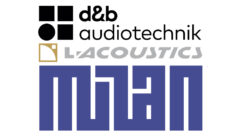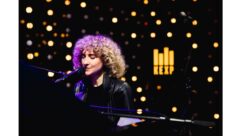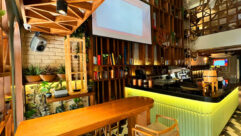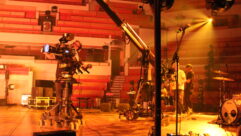Healthy Sound
Oct 1, 2008 12:00 PM,
By Michael Goldman
Dan Daley’s article about installation trends in clubs (p. 20) addresses the issue of noise and how audio professionals need to seriously consider safety regulations and the comfort of club neighbors as they design and install audio systems in these facilities. Shortly after I read Daley’s article, I saw a release go by promoting the fact that the House Ear Institute was offering hearing-conservation education and hearing screenings at the AES show this month for the 12th consecutive year.
These are reminders of how AV technology can impact health. Consumers who are routinely exposed to modern sound systems are obviously threatened with hearing loss. So, too, are the industry professionals who install and maintain those systems. In such venues, sound levels routinely lurch past OSHA standards, which are designed for the workplace. Since prolonged exposure to sound levels of 85dB or higher has been shown to cause permanent hearing damage, it’s reasonable to presume those routinely exposed to such systems are at risk. Many audio-industry players have been leaders in addressing this issue for years. Shure, for instance, sponsors the hearing screenings at AES, runs a Listen Safe Program, and routinely works with the Deafness Research Foundation.
The irony is that AV technology and design can also play a central role in directly addressing this problem. Our industry has, of course, revolutionized opportunities for the hearing-impaired with assistive-listening systems. Breakthroughs in sound-absorbing materials, acoustical science and design, digital control, and loudspeaker hardware have all made installations sound both better and safer.
Peter Janis, president of Radial Engineering, says that modern scientific understanding of acoustics alone has allowed “innovation to come from the application side” in the installation world.
“Today, we understand so much more about acoustics — how sound travels, where panels can be placed for greater efficiency,” Janis says. “Corners, for instance, employ walls and ceilings as wave guides, making them the first place one would normally treat a room.”
He says companies are increasingly focusing on inexpensive, easy-to-install acoustic-panel technologies to address what were major acoustical problems in busy, public venues. “Budget, balance, placement, and common sense” are the primary factors to consider when treating such facilities, Janis says.
“No point telling a restaurant owner that he needs to cover windows to improve sound — it won’t happen,” he says. “For echo to survive, it needs two parallel surfaces. So if you have windows on one wall, try to use the opposite wall to absorb reflections. The higher the frequency, the more directional, so think in terms of vectors. Then, use common sense. Don’t put hanging baffles in a gymnasium, for instance. Don’t mess with any panels that are not ASTM E84-rated. Acoustics, in that sense, are not really that complicated.”










